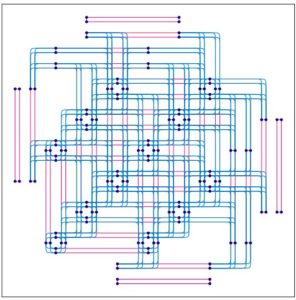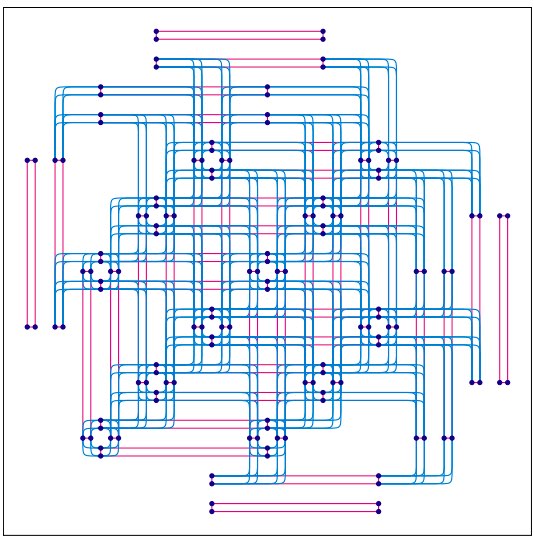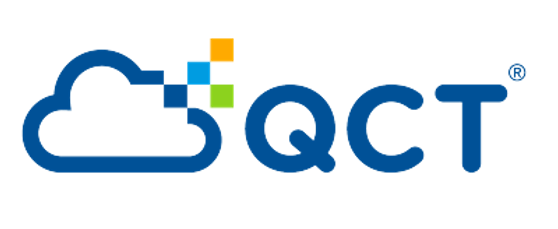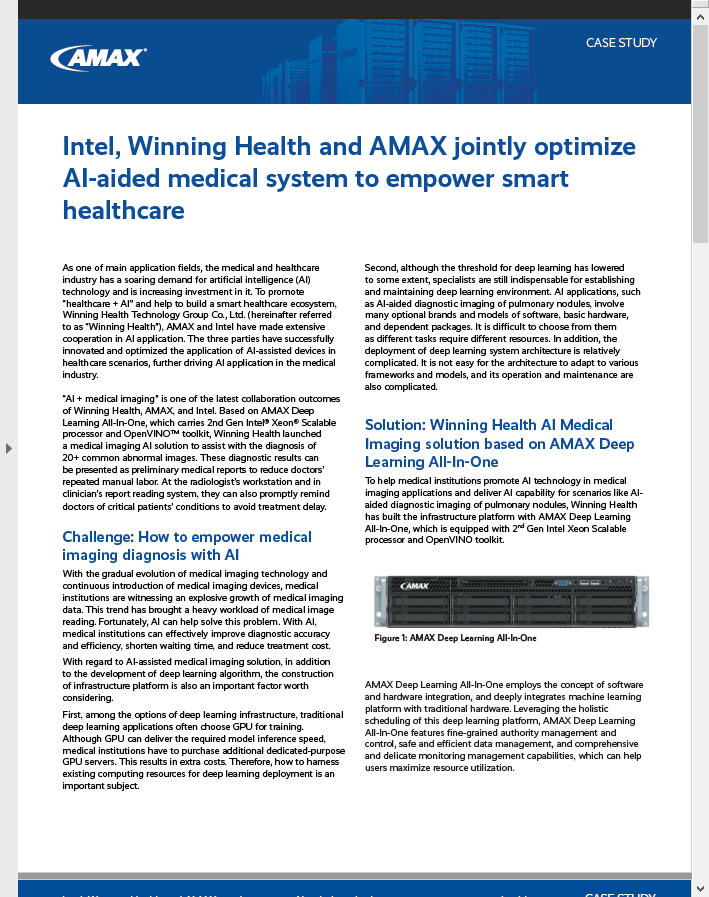
Roadway-style drawing of qubits (dots) and couplers (lines) in a P3-sized Pegasus(0) processor, where curved blue lines are “internal” couplers, long red lines are “external” couplers, and short red lines are “odd” couplers.
Today D-Wave Systems released a preview of its next-generation quantum computing platform incorporating hardware, software and tools to accelerate and ease the delivery of quantum computing applications.
Quantum computing is only as valuable as the applications customers can run,” said Alan Baratz, chief product officer, D-Wave. “With the next-generation platform, we are making investments in things like connectivity and hybrid software and tools to allow customers to solve even more complex problems at greater scale, bringing new emerging quantum applications to life. Every decision we’ve made and every decision we’ll make will reflect an ongoing commitment to helping developers learn quantum systems and helping customers build the first commercial quantum killer applications.”
Reflecting years of customer feedback, the platform captures users’ priorities and business requirements and will deliver significant performance gains and greater solution precision. Users will also benefit from the ability to embed larger problems on the quantum computer, speeding the development of commercial quantum applications.
The next-generation D-Wave quantum platform will include ongoing upgrades available through the cloud, a new quantum system and new software for tools and applications:
- New Topology: The Pegasus topology is the most connected of any commercial quantum system in the world. Currently, each qubit in the Chimera topology is connected to six other qubits. With the Pegasus topology, each qubit is connected to 15 other qubits. With two and a half times more connectivity, Pegasus enables the embedding of larger problems with fewer physical qubits than the Chimera topology. The D-Wave Ocean software development kit (SDK) includes tools for generating the Pegasus topology. Interested users can try embedding their problems on Pegasus. Technical information on the Pegasus topology can be found in this white paper, and a visualization of the topology can be found here
- D-Wave Ocean development tools: Ocean include compilers for easy porting of users’ problems into the Pegasus topology (including problems embedded into the Chimera topology). Interested users can explore a Pegasus simulation today and trial the topology in the Ocean tools (link to Ocean, Pegasus GIF and link to white paper here).
- Lower Noise: The next-generation system will include the lowest-noise commercially-available quantum processing units (QPUs) ever produced by D-Wave. This new QPU technology further improves qubit coherence, and paves the way to even greater speedups for existing and new quantum computing applications.
- Increased Qubit Count: With more than 5000 qubits, the next-generation platform will more than double the qubit count of the existing D-Wave 2000Q system. Combining more qubits with the new topology will give quantum programmers access to a larger, denser, and more powerful graph for building commercial quantum applications.
- Expansion of Hybrid Software & Tools: Further investments in ease-of-use, automation, and new tools will provide an even more powerful hybrid rapid development environment. The hybrid software and tools will build on the existing D-Wave Hybrid offering, allowing developers to run across both classical and the next-generation quantum platforms in the familiar coding environment, Python. The modular approach incorporates logic to simplify distribution of classical and quantum tasks, allowing developers to interrupt processing and synchronize across systems in order to draw maximum computing power out of each system. Additionally, the open source tools in D-Wave’s Ocean SDK are written in Python and C for ease of use and performance.
- Flexible Access: The next-generation D-Wave quantum platform will be available to run and build applications by purchasing hours of use through the Leap cloud service, and the next- generation system will also be available for installation at customer sites. Flexible purchase plans allow developers, researchers, governments, institutions, and forward-thinking businesses to get started and access the D-Wave quantum system in the way that works for them and their business.
- Ongoing Releases: Components of the D-Wave next-generation quantum platform will come to market between now and mid-2020 via ongoing QPU and software updates to be made available through the cloud. The complete system will be available through cloud access and for on- premise installation in mid-2020. Interested users and customers can get started today by using the Ocean tools to embed problems on the new Pegasus topology and will benefit from new components of the platform through Leap as they become available.
D-Wave’s next-generation platform will be a significant milestone in D-Wave’s commitment to help customers succeed in their real-world quantum computing application development efforts. To date, D- Wave customers have developed more than 100 early applications in areas as diverse as airline scheduling, election modeling, quantum chemistry simulation, automotive design, preventative healthcare, logistics and more. Many have also developed software tools that simplify application development. These existing applications, tools and community give developers a wealth of examples to learn from and build upon. The next generation platform promises to continue to expand the variety, performance, precision and breadth of quantum applications.
Download the D-Wave Whitepaper: Next-Generation Topology of D-Wave Quantum Processors




